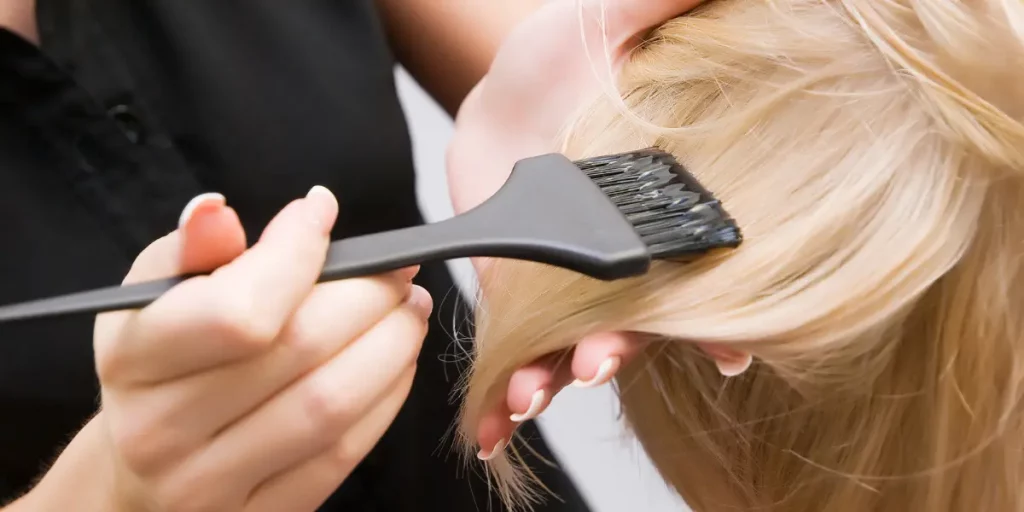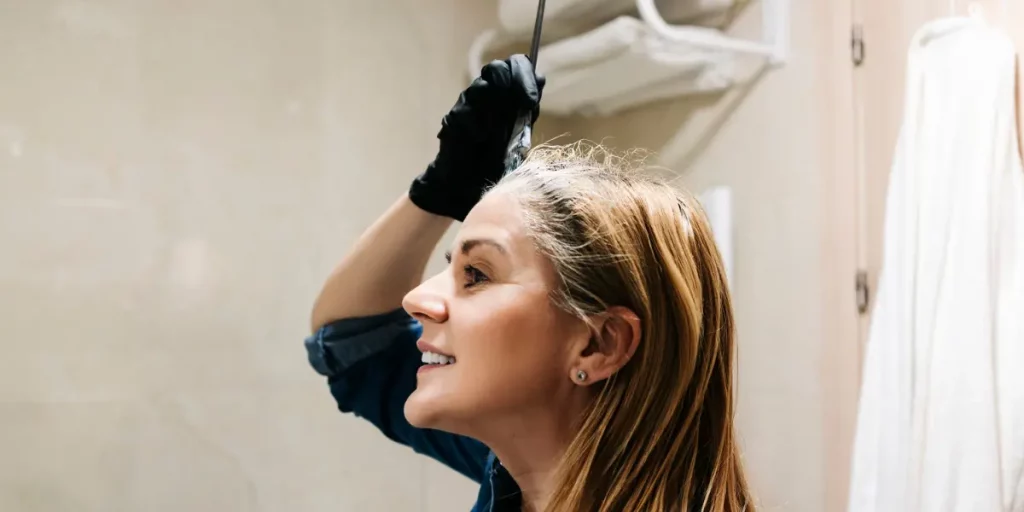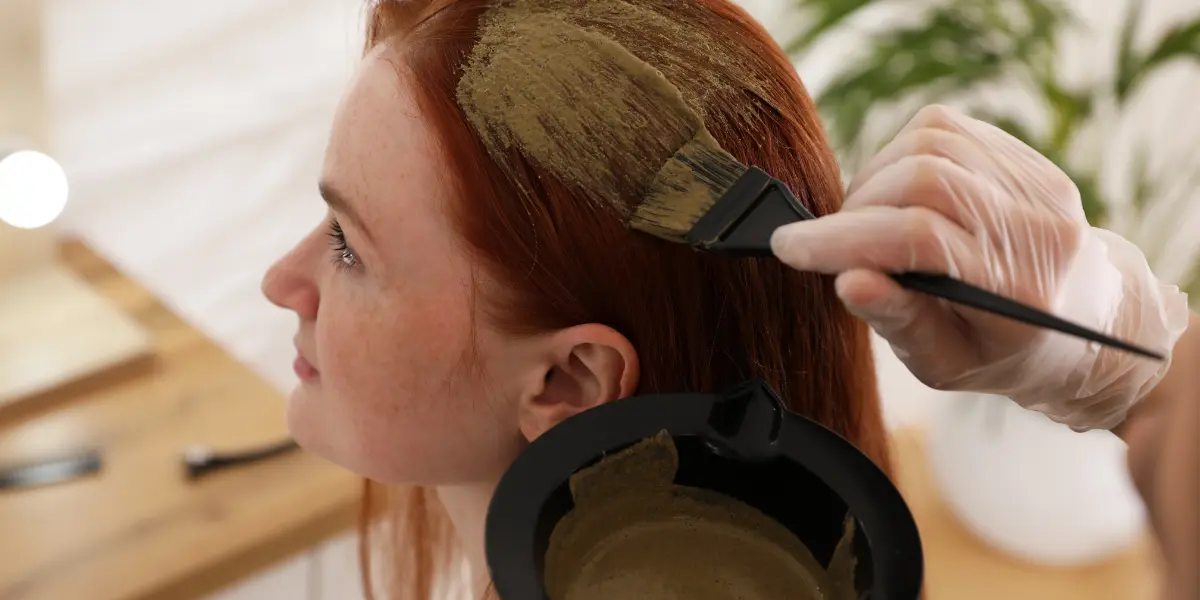A revolutionary beauty hack has taken the internet by storm, claiming that food coloring can be used as a homemade hair dye. Every other beauty blogger on internet is talking about this hack. You heard about this and now the question that must be popping up in your mind must be that does this hack or DIY even works? Because it sounds fake, how an ingredient in your kitchen cabinet can save your trip to salon? We got you. The simple and straight answer is yes, you can dye your hair with food color! You heard right! Let’s move on and further interrogate the process.
Which type of Food coloring is safe to use as a hair color?
Food colorants, also referred to as color additives or colorants, are substances that impart color to food and beverage products. The production of food colorants has evolved from traditional coal-tar-based methods to contemporary synthesis primarily derived from petroleum-based raw materials. These colorants are categorized into two distinct classes: dyes, which are water-soluble, and pigments, which are insoluble and require a dispersing agent. Dyes are safe to be used as hair color as compared to pigments because they can cause dryness and certain other type of irritations. So, if you wanted to a change in your hair color without longer commitment and enjoy different hair styles, choose dyes instead of pigments.
How long does food dye last in your hair?
The factors that can affect the longevity of food color as hair dye are:
1. Hair Type and Texture: Fine, light, or porous hair tends to absorb color more quickly and can retain the dye for a longer period. In contrast, thick, dark, or less porous hair may not hold the color as well or for as long.
2. Color Intensity: The initial intensity of the color can impact its longevity. A more concentrated dye may result in a more lasting color.
3. Application Method: The way the color is applied can also affect its duration.
Temporary Coloring:
Mix food coloring with conditioner or hair gel. Apply to your hair and leave on for a short time for a light color or longer for a deeper color. If unsure of the color, perform a strand test by washing a small section of hair to see how much color has stuck. Avoid using hot water, as it can cause the color to fade.
Permanent Coloring:
Use color developer or vinegar for a more vibrant, longer-lasting color. This method may require lightening your hair first.
Tip:
This method works best with light blonde hair, but can still be tried with dark hair.If unsure, perform a strand test on a small, inconspicuous section of hair
Pre-Application Preparations:
1. Start with clean, dry hair to ensure the color adheres evenly.
2. Consider using a vinegar rinse to slightly open up the hair cuticles for better color absorption.
Post-Application Care:
1. Avoid washing your hair frequently to prevent the color from fading quickly.
2. When you do wash, use cold water to help preserve the color.
3. Use sulfate-free shampoo to gently clean your hair without stripping the color.
4. Consider using a color-depositing conditioner to help lock in the color.
5. Avoid using hot tools or heat styling tools, as they can cause the color to fade faster.
6. Use a color-protecting spray or serum to help shield your hair from the sun and environmental factors that can cause fading.
How to remove food coloring from your hair? Top 5 ways

Fed up from your hir dye and needs to change it? No worries here are the top 5 natural and professional methods to remove the dye from hair.
1: Baking Soda Scrub: Exfoliate and lift color with a gentle scrub made from baking soda and shampoo.
2: Vitamin C Lightener: Nourish and lighten your hair with a mixture of crushed vitamin C tablets and shampoo.
3: Color Correctors: Specially formulated products that target and neutralize unwanted color tones.
4: Hair Bleaches: Powerful solutions that lift and remove color, available in various strengths.
5: High-Lift Color Removers: Advanced formulas that gently yet effectively remove color, ideal for removing vibrant or long-lasting dyes.
2 trendy ways to dye your hair with food coloring
How to dye your hair with food coloring and water?
Dyeing your hair with the combination of food coloring and water is not the most recommended way because it can cause certain problems for your hair and scalp. But if you have decided to try it here is the process:
- Start by mixing 1-2 tablespoons of food coloring with 1 cup of water in a bowl
- Stir the mixture well to ensure the color is evenly distributed.
- Submerge your hair in the water.
- Remove your hair from the water and brush it, preferably outside to avoid splatters.
- Let your hair dry naturally.
Can you dye your hair with food coloring and conditioner?
To dye your hair with food coloring, start by mixing 1-2 tablespoons of food coloring with 1 cup of water or a conditioning treatment. For a permanent option, use 2 tablespoons of developer instead. Add food coloring to the mixture, using more for a deeper color. Keep in mind that the color will turn out lighter than what’s in the bowl, and use regular liquid or gel food coloring. If you have yellow or brassy tones in your hair, add purple or blue to the dye to cancel them out.
Divide your hair into sections, at least four, and apply the dye starting from the roots. Work the dye into your hair, avoiding suds, and use a special applicator brush if needed. For highlights, apply the dye to thin sections of hair and wrap with plastic wrap or aluminum foil. Leave the dye in for 30 minutes to 3 hours, depending on the desired color depth.
Tip:
If you want to test the color, do a strand rinse test. Take a strand of hair from an inconspicuous area and rinse it. If the color is too light, leave the dye on longer. Once you’re satisfied with the color, wash the dye out with cool water to seal the hair’s cuticle and preserve the color. Avoid using shampoo and conditioner, as they will remove the color.
Can food coloring damage your hair? The cons of food coloring

Using food color as a hair dye is one of the easiest ways to dye hair but it is not the best approach. It cannot never be an alternative of the products especially formulated to dye hair and can never compete them. The acidity in vinegar can help seal the hair cuticle and boost shine, but soaking your hair in it may be overdoing it. Additionally, using food coloring can be messy and difficult to remove. However, if you’re interested in trying this DIY method, using a small amount of food coloring mixed with shampoo or conditioner can be a safe way. This will help smooth the cuticle and control color absorption. So, all in all temporary coloring method is the safe and in fact more accurately the less damaging way. If you want to achieve desired look without the commitment or cost of professional dyes this DIY is an accessible and affordable alternative.
Can food coloring as hair dye make your hair fall out?
Using food coloring as a hair dye can lead to hair loss due to several reasons. The chemicals present in food coloring can react with the hair shaft, causing damage and breakage. Additionally, food coloring has a high pH level, which can disrupt the hair’s natural pH balance, leading damage to hair growth and hair loss. Furthermore, food coloring can strip the hair of its natural oils, causing dryness, brittleness, and breakage. Some individuals may also be allergic to certain ingredients in food coloring, which can trigger an allergic reaction, resulting in hair loss. Finally, using food coloring as a hair dye can lead to over-processing, causing hair to become brittle, break, and fall out.
Conclusion:
Using food coloring as hair dye can be a fun, temporary and cheapest way to add color to your hair. However, it’s important to note that food coloring is not a permanent hair dye and may not be as vibrant or long-lasting as commercial hair dyes. To extend the life of the color, it’s recommended to start with clean and dry hair, use a vinegar rinse, and avoid washing your hair frequently. Additionally, using sulfate-free shampoo. Overall, food coloring can be a creative and non-damaging way to add a pop of color to your hair, but it may require some extra care and maintenance.
